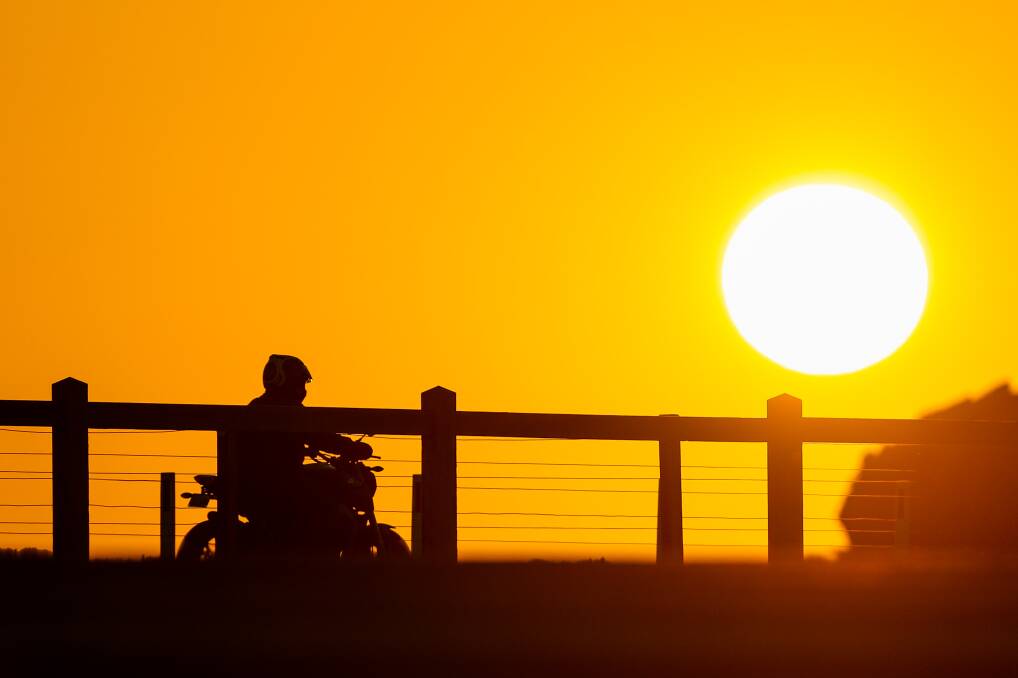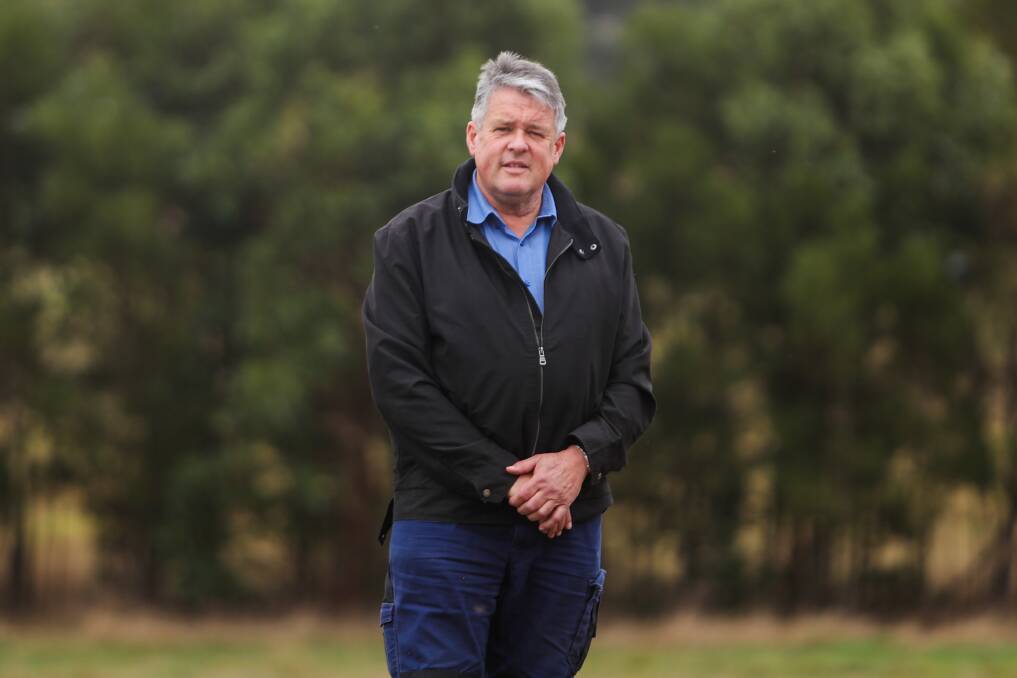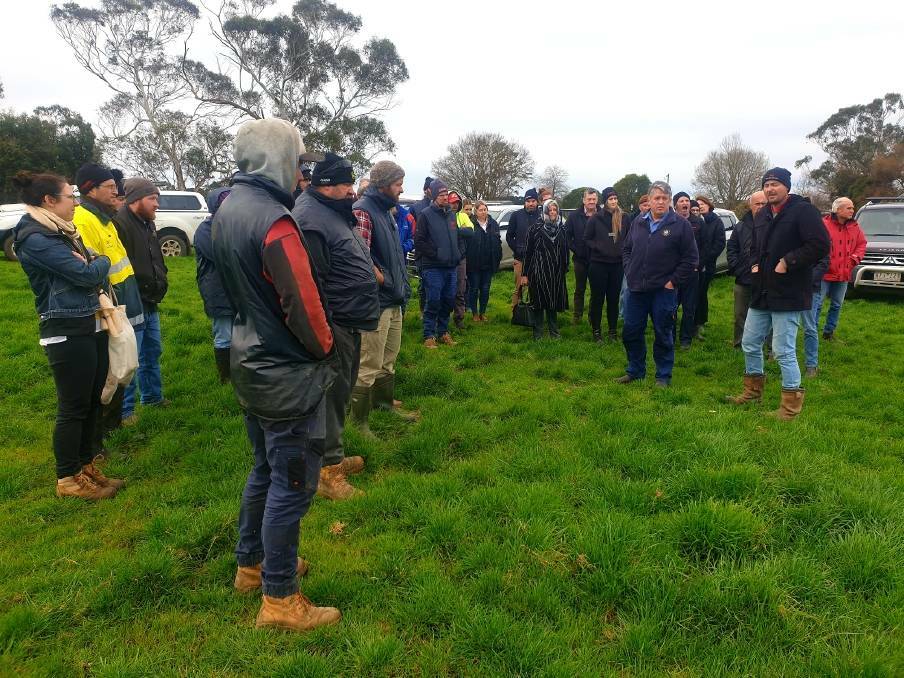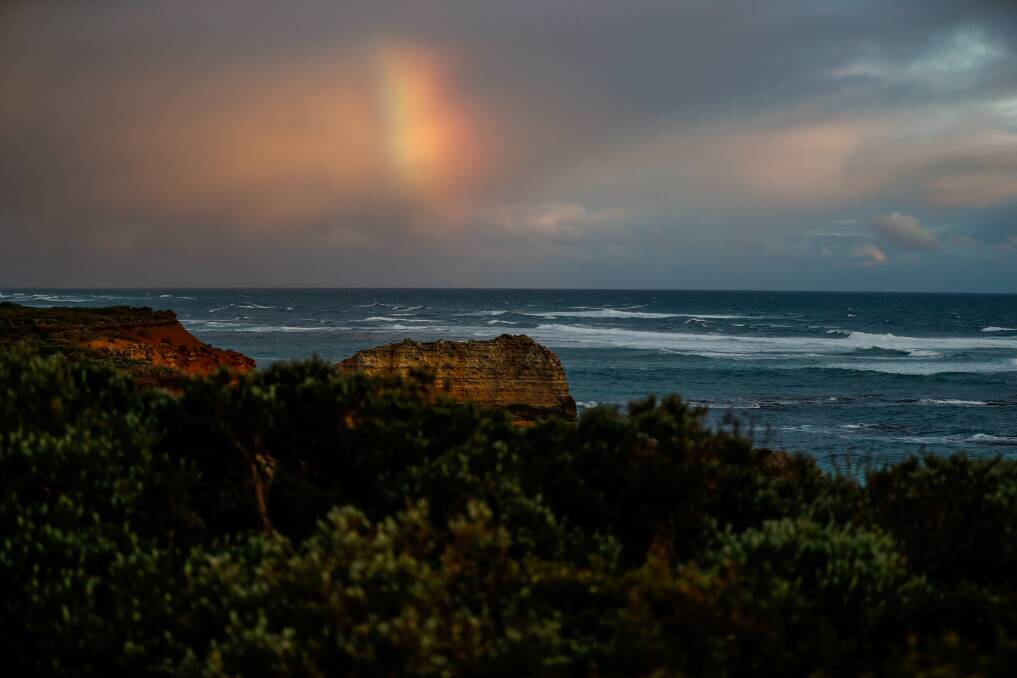
Extreme heat, fire, and floods.
Subscribe now for unlimited access.
or signup to continue reading
That's what the future has in store for south-west Victoria, according to a new report released by CSIRO and the Department of Environment, Land, Water and Planning last month.
The Barwon South West Regional Climate Adaptation Strategy has been years in the making, involving the collection of troves of scientific data as well as collaboration and engagement with hundreds of citizens, government organisations, community groups and other stakeholders across the region.
The key objective of the strategy is to help chart a path for the coming decades using both expert advice and community views and ambitions as a guide. But firstly it sets out the climatic and environmental changes that lie ahead for the south-west.
Growing extremes
Over the coming decades temperatures in the south-west will rise across the board.
Minimum temperatures will be higher, and so will maximums.
Average winter temperatures will rise, and so will summer averages.
Even by 2030 the report predicts average temperatures will be perhaps 1.5 degrees Celsius above averages in the 1990s.
While it might not sound like much, CSIRO climate scientist Dr Leanne Webb said the effect would be most noticeable during "extreme weather events".
Heatwaves, a rare event somewhere like Warrnambool, will become longer and more frequent.
"You're very likely to have longer periods of extreme heat, over 35 degrees," Dr Webb said.
This will hit local plants and animals hardest, but it's likely to become an increasing headache for local agriculture.
"There are some crops that, when they're flowering, can only cope with a couple of days over 32 degrees," Dr Webb said.
Many farmers may have to find ways to protect their crops, or change what they farm entirely.
Long-term rainfall patterns are much harder for climate scientists to model but the report says winter and spring rain has a "medium to high" chance of steadily declining over the coming years.
And when the rain does come, it is almost certain to fall in intense bursts, raising the risk of flash flooding. Floods that were once one-in-100-year events will happen far more frequently.
Then there is the risk of bushfires, a danger seared into south-west memories by the St Patrick's Day fires as well as the Black Summer bushfires of 2019-20.
Higher average temperatures, lower rainfall, and longer heatwaves will almost certainly mean more frequent, more intense bushfires throughout the south-west.
Adaptive agriculture
Dr Webb has spent years speaking to farmers about the best ways to adapt to the changes that are already happening.
She said there was a wealth of resources and research out there to help farmers change with the climate, and that more and more farmers she spoke to were coming to the realisation that adaptation might be necessary to survive in the industry.
Heytesbury District Landcare Network co-ordinator Geoff Rollinson said he was already working with dairy farmers to future-proof their pastures.
"It won't be long before rye grass isn't going to cut it any more in the warmer months," Mr Rollinson said.

Through the landcare group, and supported by various government grants, he was introducing farmers to more than a dozen alternative grasses that would be more resilient through the summer heat.
"We've been using up to 16 different species of grass.
"Some of the varieties have tap roots that go down a metre underground, far below the level where evaporation penetrates," he said.
Mr Rollinson said not only did the deep roots help the grass survive harsh weather, they also trapped carbon deep in the earth, removing it from the atmosphere and enriching the soil.
"It's a win-win," he said
The alternative grass idea is one pillar of the landcare group's Keeping Carbon on the Farm initiative, which began as a pilot project on just one farm.
The Barwon South West Regional Climate Adaptation Strategy singles out the project as a key case study.
"The outcomes of the project saw an increase in carbon-sequestration in soil profiles, a reduction in energy usage and better understanding of how climate change will impact dairy farmers," the report said.
Mr Rollinson said the initiative had now been rolled out to 30 farms across the Heytesbury region, and was likely to keep spreading in such an agriculture-intensive area.
The adaptation strategy notes farms in the south-west produce the biggest agricultural output of any Victorian region.
The area produces 28 per cent of Victoria's beef, 31 per cent of Victoria's dairy (and nearly a quarter of the national milk output) worth $1 billion annually, 34 per cent of Victoria's sheep meat, and contains nearly 20 per cent of Australia's forest plantations.
While that enormous output is impressive, it also classifies the south-west economy as "highly specified", meaning it is vulnerable if something - a changing climate for example - threatened its agriculture industry.
The report says by the 2050s the climate of Warrnambool is likely to resemble the current climate in Benalla, a town in Victoria's north-central region that has traditionally been a dry-cropping and pastoral area.
Mr Rollinson said while big changes were ahead, farmers could still adapt.

"There is a huge kit-bag of tools farmers can draw on," he said.
He said pastures weren't the only thing that needed to change, identifying re-vegetation of farms as a key.
"Cows are comfortable between around 16 and 26 degrees, any hotter than that and they are using energy to try to cool down," Mr Rollinson said.
"That means planting shelter belts to give them shade in hot weather will become crucial."
He said the crucial thing was to start making changes now.
Climate action
The report lays out a clear cost for delaying climate action, noting "every dollar spent now on adaptation can avoid future costs of up to six times as much".
It lists a dozen government projects since 2015 that have targeted the Barwon and south-west regions.
While these projects have been vital, the report says, they have only laid the groundwork for the heavy lifting that must be done over the next decade and beyond.
One of the keys to wide-ranging change, it says, is "building a business case for action". Climate change advocacy has always relied heavily on a moral call to action, but the report suggests appealing to people's common sense or hip pocket is more likely to get them on board.
Mr Rollinson said many of the farmers he was working with had already found they were saving money by adapting their farming practices.
"The revegetation and diverse grasses are naturally improving the condition of the soil, so they find they don't have to spend so much on fertiliser," he said.
One challenge for the region-wide plan is the huge number of organisations and groups involved. Hundreds of stakeholders provided feedback for the strategy, all with differing priorities and capabilities.
Warrnambool City Council has itself forged ahead with its community-led Warrnambool Green plan, which sets a range of targets to achieve by 2040.

The council, like many others throughout the region, is working to get more and more of its electricity from renewable sources and recently joined with 46 councils across Victoria to sign a power purchase agreement that will source 40 per cent of its power from wind energy.
It is the kind of collaboration the council hopes will provide a template for further progressive action to reduce the region's carbon footprint.
Where to now?
The adaptation strategy lays out the coming challenges, and gives examples of innovative projects that provide a possible way forward, but it doesn't set a strict template for climate action.
The next step, it says, is to re-engage with the communities that helped mould the strategy, starting with young people and local Aboriginal groups. That process would help guide the next round of adaptation projects.
The process is "continually evolving", the report says. "There is no end point".
Now just one tap with our new app: Digital subscribers now have the convenience of faster news, right at your fingertips with The Standard:
Our journalists work hard to provide local, up-to-date news to the community. This is how you can access our trusted content:
- Bookmark https://www.standard.net.au/
- Make sure you are signed up for our breaking and regular headlines and newsletters
- Follow us on Facebook, Twitter, Instagram and LinkedIn
- Tap here to open our Google News page.
- Join our Courts and Crime Facebook group and our dedicated Sport Facebook group
- Subscribe















